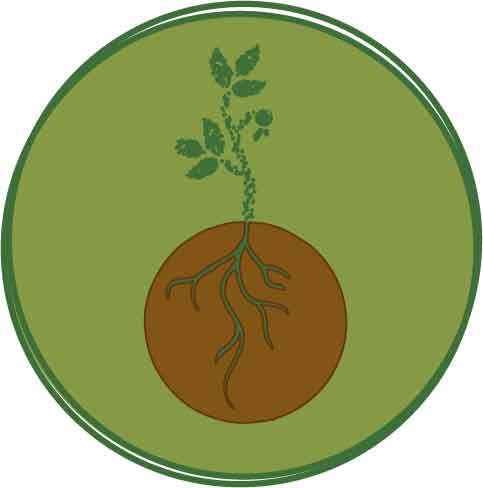By Dr. Robin Buruchara, Director of the Pan Africa Bean Research Alliance, CGIAR-CIAT
Fighting for productivity and resilience
 Farmers around the world are in a constant battle to help their crops thrive in the face of unpredictable weather patterns, low soil fertility, and biological stresses. Luckily, they have a reliable weapon to help them in this fight.
Farmers around the world are in a constant battle to help their crops thrive in the face of unpredictable weather patterns, low soil fertility, and biological stresses. Luckily, they have a reliable weapon to help them in this fight.
Adding pulses to a cropping system can increase the availability of nitrogen and other nutrients, disrupt pest, weed, and disease cycles, and reduce the impact of weather extremes. Pulses can increase overall productivity and water use efficiency of all crops in a system while improving efficiency and resilience.
Pulses can fit into a variety of production niches and support a range of uses – they can feed people and livestock, and improve soil quality. Many pulse crops are well adapted to semi-arid and dry conditions globally and can tolerate drought – an important trait in a changing climate. By biologically ‘fixing’ atmospheric nitrogen, they reduce fertilizer needs across the whole crop cycle and lower greenhouse gas footprints.
Prior to the invention of synthetic nitrogen fertilizers in the 1940s, most cropping systems included pulses as an essential way to maintain good soil nitrogen levels. In regions such as sub-Saharan Africa, where access to nitrogen fertilizers can be low, integration of pulse crops is particularly urgent for food security, health, and livelihoods.
Now, with nitrogen pollution exceeding planetary boundaries, re-integrating pulses back into cropping systems can improve overall farm sustainability and biological diversity, contributing to food and nutrition security, boosting income, and improving ecosystem services.
Quantifying benefits to increase adoption
Yet, farmers, especially smallholders, face a lot of uncertainty about market prices, labor, and other requirements for pulse crops. This can hold them back from taking advantage of the many benefits of pulse production.
Farmers need better knowledge about the positive impacts of integrating pulses into the whole cropping systems for decision making.
Pulse producers need better management tools across varied agro-ecologies, requiring specific crop types or characteristics such as pest or disease resilience. For example, most growers do not have tools to estimate pulse-derived nitrogen benefits in crop rotations or the associated financial return from adding pulses to cropping systems. Since these benefits can play out over more than one year, quantification on a multi-year basis can help producers make more fully informed management decisions.
Strengthening knowledge and technology pipelines
Appropriate agronomic management is a central pillar of pulse production that relies on site-specific information, which is too often not accessible to farmers. Research that provides farmers with options for long-term, integrated management of pulse-based cropping systems can sustainably and profitably increase productivity.
Despite successes, breeding of improved pulse varieties alone has not met the needs of pulse producers. In many places, new cultivars and agronomic packages don’t get to farmers’ fields due to fragmented pulse seed multiplication and distribution systems.
Supply chains that effectively deliver high-quality pulse seeds to producers, and harvested pulse crops to markets or processing plants, are essential to increasing pulse production and consumption.
To help pulse growers progress toward integrated soil fertility and water management, key steps include making sure they have access to the most suitable pulse varieties and agronomic packages (fertilizers, inoculum, and pesticides) as well as knowledge about organic matter management and local adaptation strategies.
To help pulse growers avoid post-harvest losses, they need access to technologies like hermetic storage bags, metallic silos, and solar bubble dryers. ICT innovations – such as apps which improve the traceability of pulse products, or speed up financial transfers – can improve interactions among farmers, traders, and other players along the pulse value chain.
To ensure improved delivery of high-quality, disease-free pulse seeds to farmers, tangible links, based on agri-enterprise systems, are needed between pulse producers and region-specific pulse breeding programs. Producers also need strong connections to a range of target markets, from local consumers to exporters of high-quality commodities.
To anticipate and respond to production challenges, pulse-growing regions need effective pipelines for improved pulse varieties, technologies, and methods that accommodate a broad range of value chain considerations from production to end use. This is particularly challenging for small, disaggregated markets which require assistance in coordinating supply and demand.
Untapped potential
The world can tap the tremendous potential of pulse crops by investing in holistic research that provides farmers with options for long-term, integrated management of pulses in cropping systems. To sustainably and profitably increase pulse productivity, research can forge strong links between improvement of the genetic potential of pulse varieties, and the socio-economic, biophysical, and technological factors that influence whether farmers will adopt pulse crops on the ground.
As part of the 2016 International Year of Pulses, scientists from around the world have developed a 10-Year Research Strategy for Pulse Crops with support from the Global Pulse Confederation (GPC) and the Canadian International Development Research Centre (IDRC). This report showcases transformative research investments that would allow pulse crops to deliver on their full potential as a critical player in the global food system.
